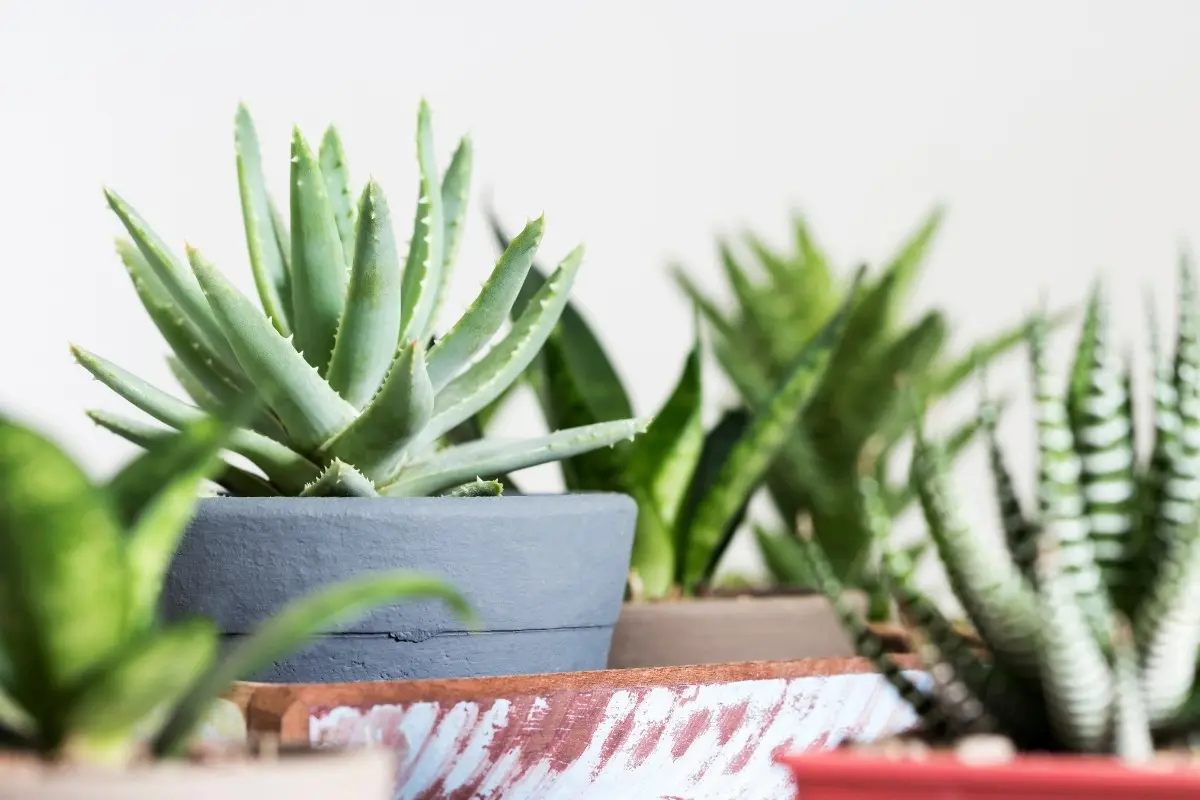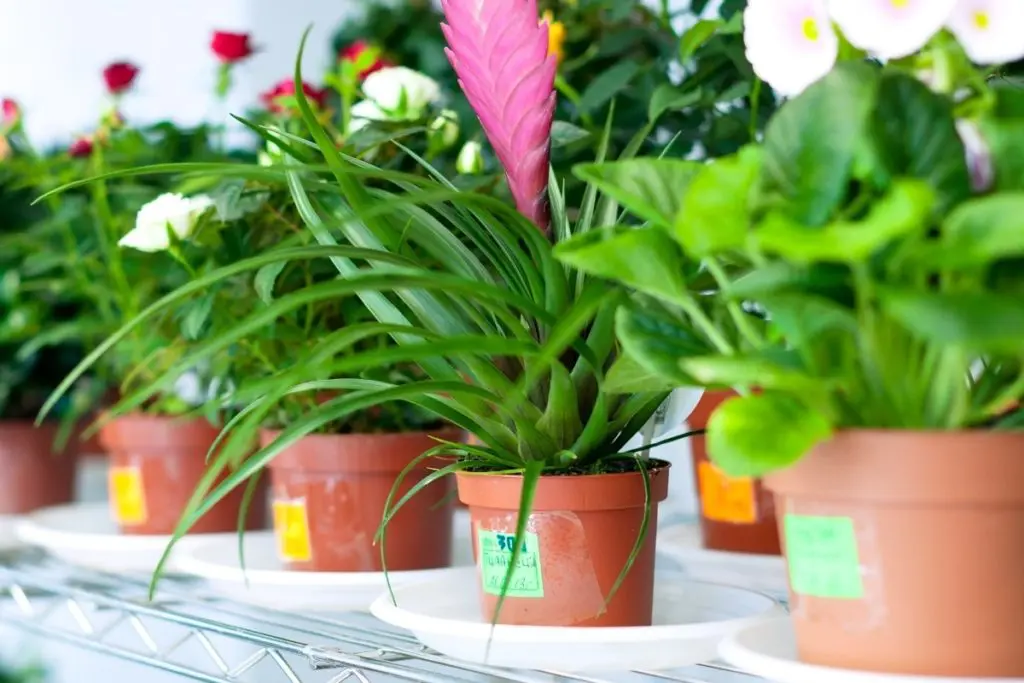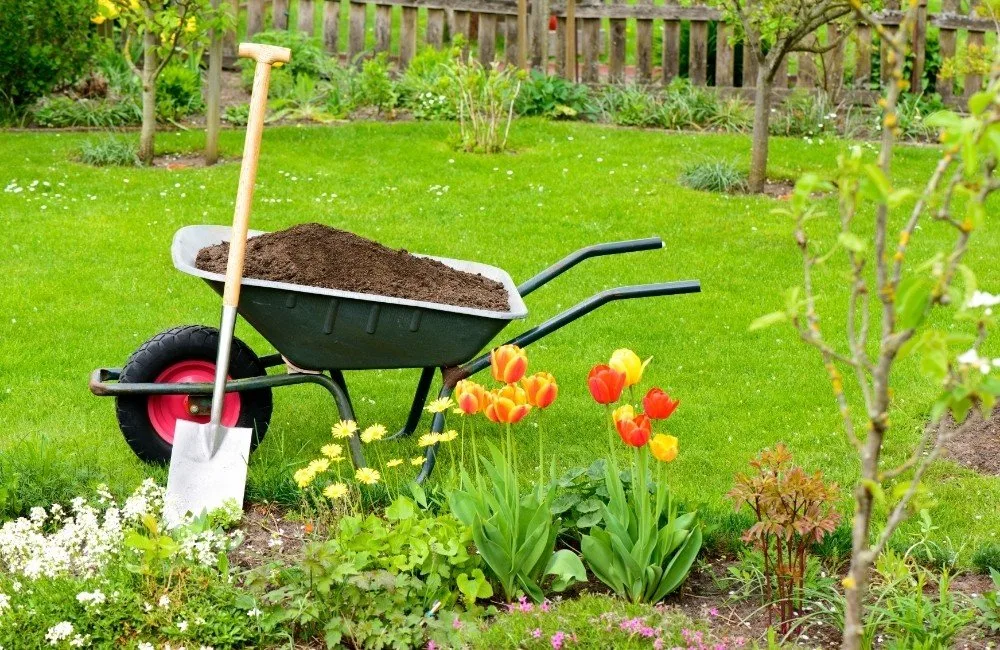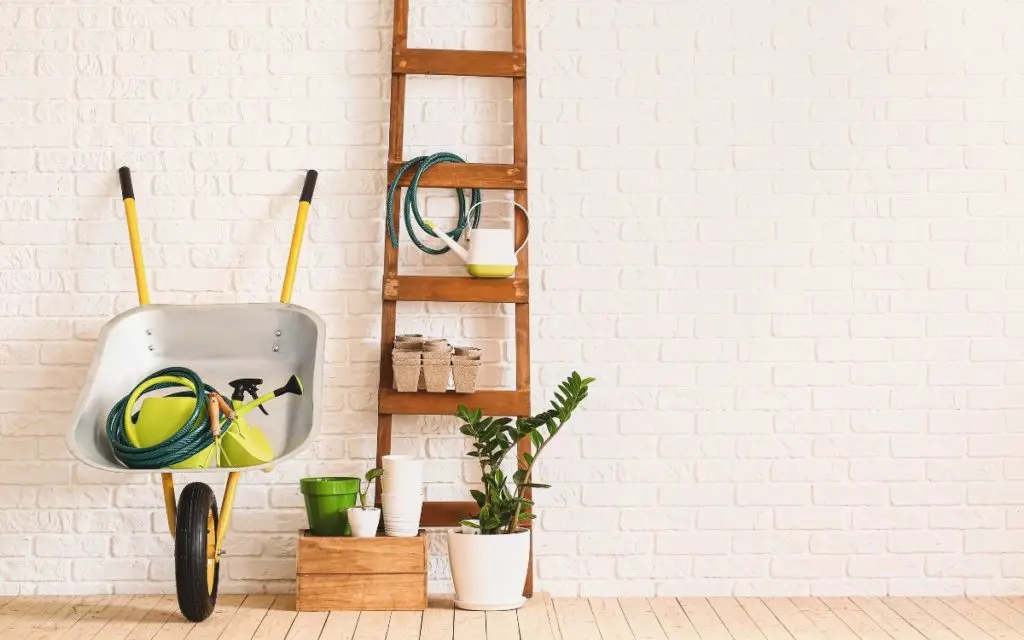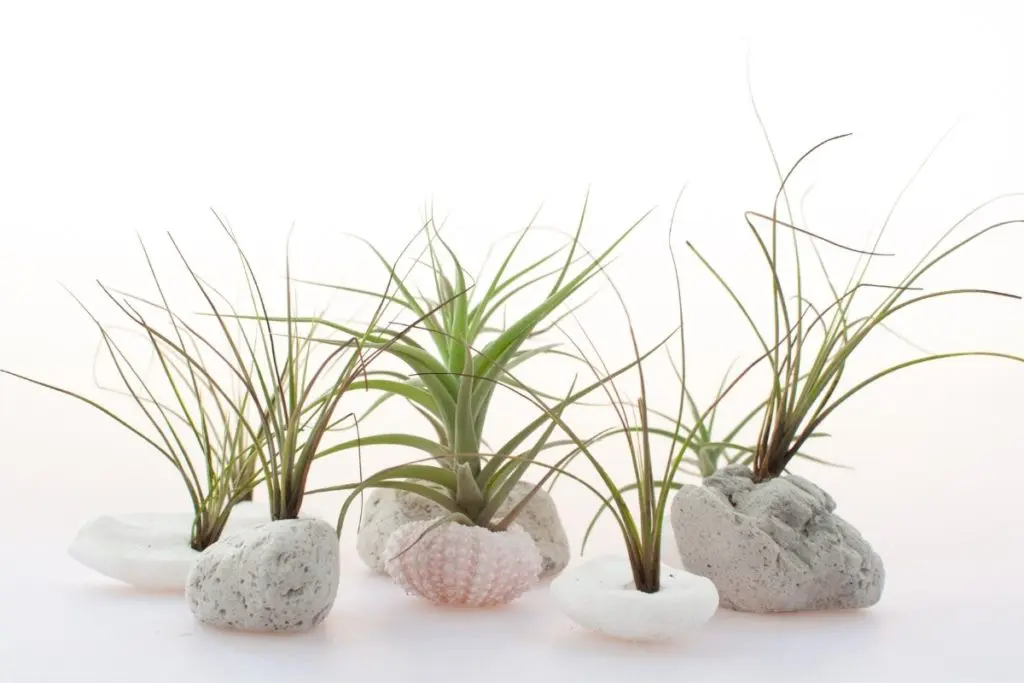It’s useful, tenacious, and pretty. It could be spiky and bright green, bumpy and dotted, or smooth with red edges. You might even have one in your home right now! We are talking, of course, about the mighty aloe, otherwise known as the “wonder plant.” There are so many types of aloe plants, and there’s a reason why they are so popular.
There is just something about this gorgeous flowering succulent that captures our imagination.
If you’re wondering how many types of aloe vera plants there are, the answer is: only one! Aloe vera is the best-known variety, but there are actually around 580 types of aloe plants in the world. Today, we’re going to share seven of our favorites.
7 Popular Types of Aloe Plants
Here are a few different types of aloe plants that work best in containers and are especially visually striking.
1
Aloe Vera (Aloe Barbadensis)
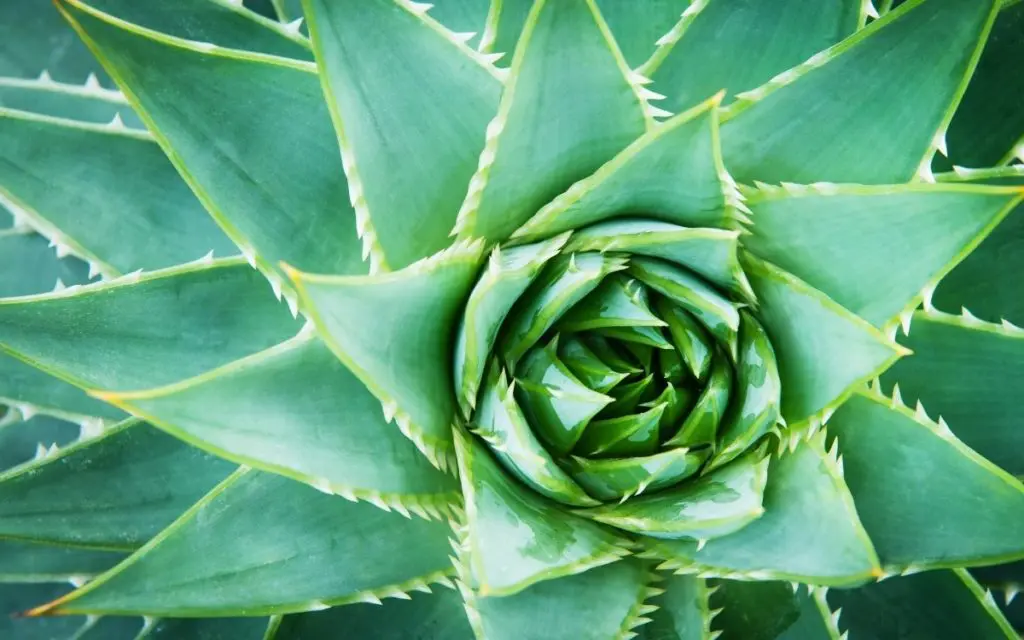
Native To: Arabian Peninsula, Africa | Average Size: 12″ to 24″ tall, 18″ to 26″ wide | Flowers: Yellow tubular blooms, once per year (usually outdoors) | Ease of Care: Very easy | Uses: Ornamental; wide variety of medicinal uses
Our first pick is the king of aloe, the classic, the “true aloe,” aloe vera. Aloe vera is one of the most common houseplants of all time, and for good reason! It’s an excellent choice for a low-maintenance ornamental houseplant. Its thick, spiky leaves are a cheerful and familiar part of many indoor living spaces. You can also add aloe vera plants to any border, container or rock garden outside, where they will get larger and wilder.
In addition to providing an attractive focal point, aloe vera has long been prized for its anti-inflammatory sap. Cut into a leaf of an aloe vera, and you’ll find a gel used for medicinal purposes for thousands of years. Full of vitamins, minerals, and even antioxidants, aloe vera gel is used as an antiseptic to treat minor burns, cuts, wounds, insect bites, and more. It’s also commonly found in moisturizing hair and skin products. Some even use aloe vera juice as a digestive aid or mouthwash.
If you’re looking to use aloe for medicinal purposes, make sure it’s this variety, aloe vera. This is quite important, as other types of aloe plants can be toxic, and should not be used medicinally.
2
Red Aloe (Aloe Cameronii)
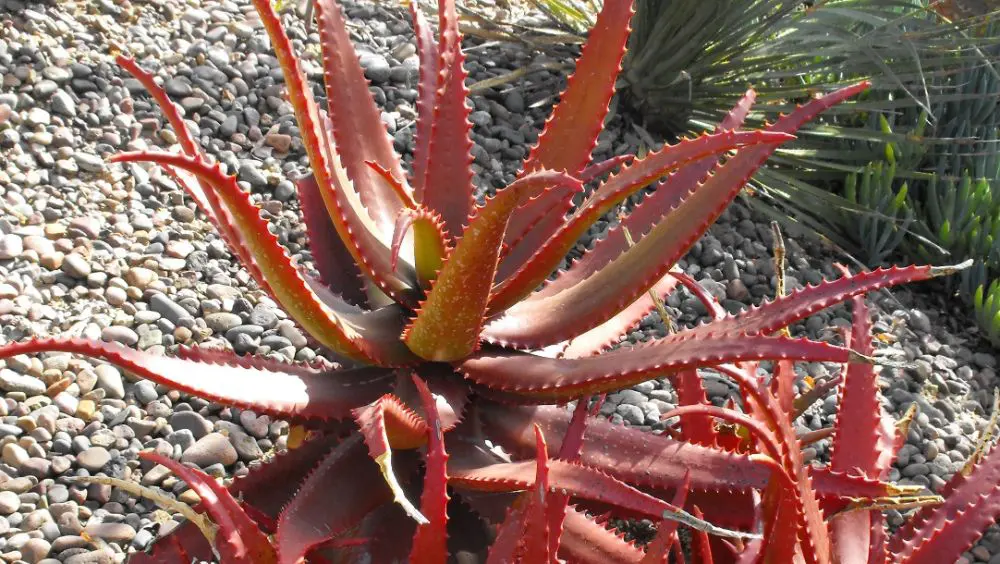
Native To: Africa | Average Size: 12″-24″ high, 2′-4′ wide | Flowers: Spikes of orangish flowers in late fall | Ease of Care: Very easy | Uses: Decorative.
Featuring large, toothy, Medusa-esque leaves and dramatic flowers, red aloe is best suited for a large container. While it’s typically a reddish color as its name would suggest, the leaves of aloe cameronii can range from greener to deeper red. This depends on the amount of light and water you expose it to. (More sun and less water = redder in color.)
Red aloe is an excellent variety if you’re looking for a plant that is very tolerant of drought and poor soils. It’s also suitable if you’re looking for a large, non-clumping variety of aloe.
3
Lace Aloe (Aloe Aristata)
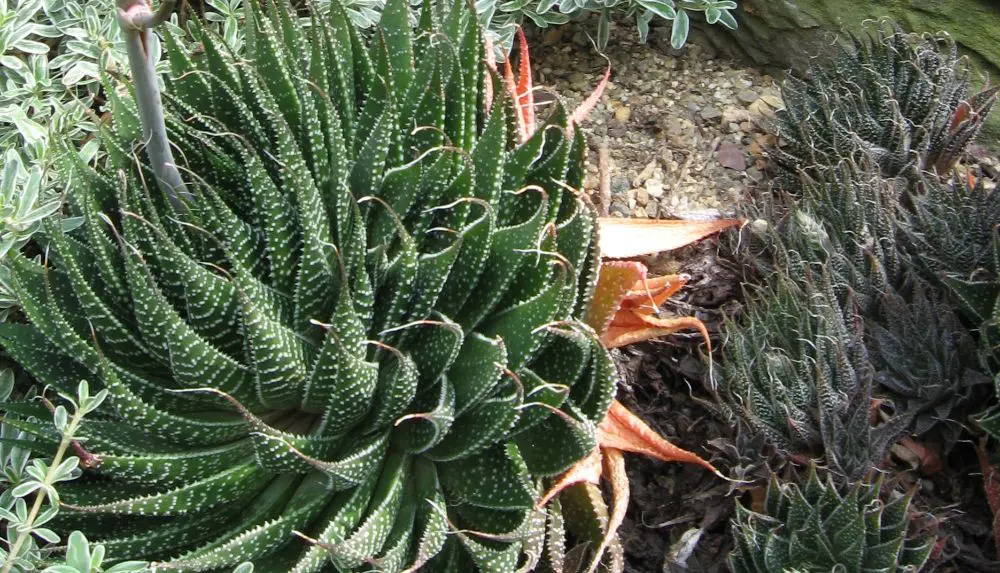
Native To: Southern Africa | Average Size: 8″-12″ tall, 8″-12″ wide | Flowers: Orange-red conical flowers in winter, up to 20″ in height | Ease of Care: Very easy | Uses: Decorative. Deer resistant; flowers produce nectar that attract birds and bees.
Also known as the “torch plant,” this aloe variety has a dedicated fan base, and it’s easy to see why. Delicate white specks run up and down the leaves, and tiny white teeth line the edges. The leaves grow into a rosette shape and finish in cute fuzzy tips.
Don’t let this aloe’s pretty exterior fool you — it’s one of the hardier varieties. It can withstand colder temperatures and more drought more than many aloes. It’s also quite content in a sunny spot indoors.
4
Coral Aloe (Aloe Striata)
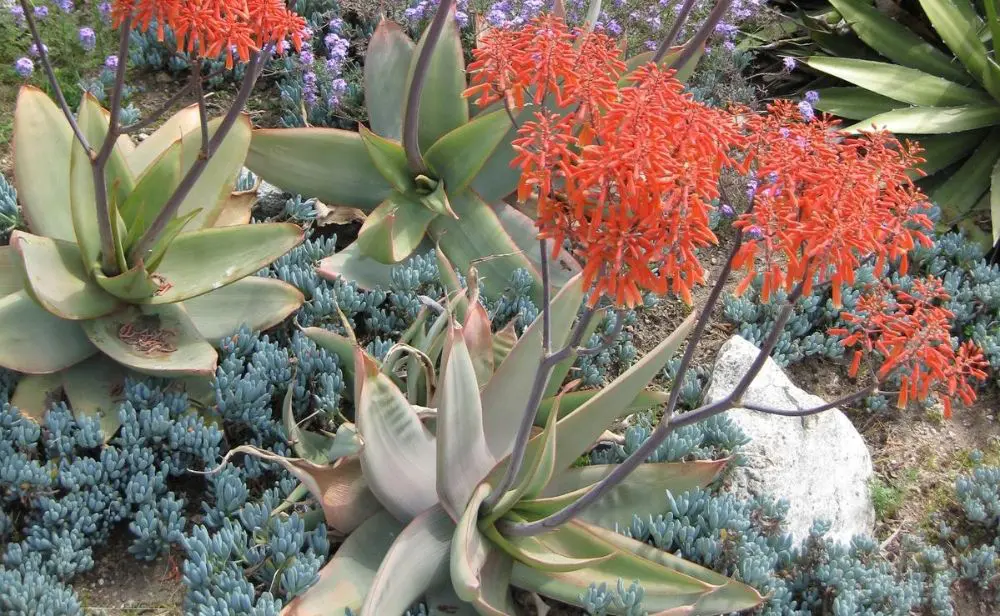
Native To: South Africa | Average Size: 18″ tall, 18″ wide | Flowers: Tubular coral clusters grow from late spring to early winter | Ease of Care: Very easy | Uses: Decorative. Deters deer; flowers attract birds and bees.
Coral aloe is an elegant stunner, with smooth, dusty green leaves delicately rimmed in a pink coral color. The sunnier the spot, the brighter its coral edges become. Tall, clustering flowers provide a cheerful, brightly-colored focal point in the wintertime.
Coral aloe is a striking addition to an outdoor rock or succulent garden, or also great in a sunny area inside.
5
Aloe ‘Guido’
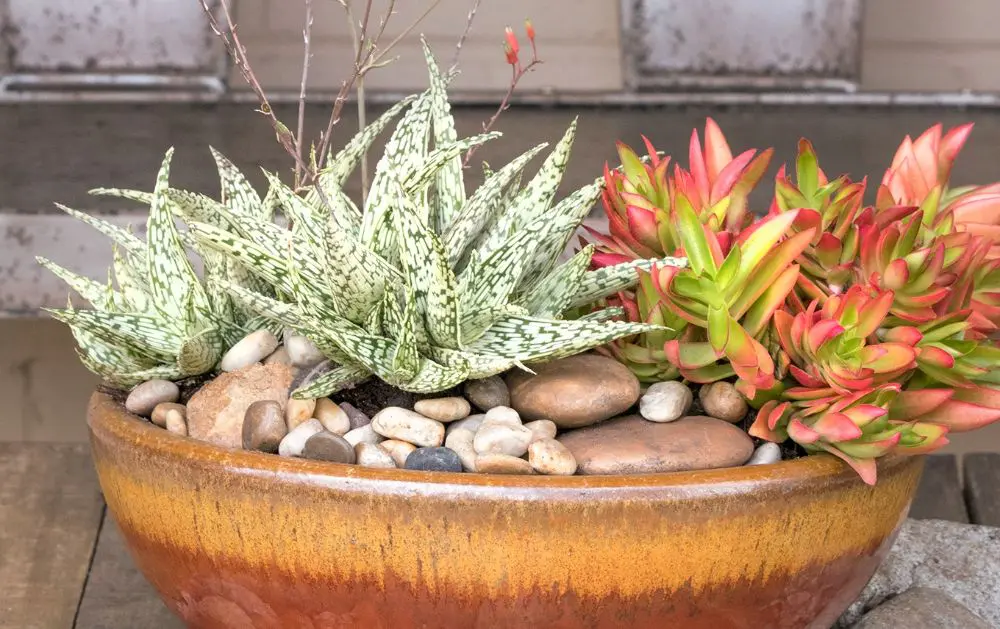
Native To: Hybrid | Average Size: 6″-8″ high, 6″-8″ wide | Flowers: Small spikes of coral bell-shaped flowers in late summer | Ease of Care: Easy | Uses: Decorative
Yo, guido aloe is tremendous! This smaller, bi-color beauty has a retro feel to it, with unique dots and dashes alternating along the length of the leaves, almost making it look like a textile.
The guido is heat and drought tolerant, but it doesn’t like cold, so it’s an especially great indoor choice. Aloe guido is perfect for a smaller pot, or planted in groups of small containers. Get ready for everyone to ask, “what kind of plant is that?”
6
Spiral Aloe (Aloe Polyphylla)
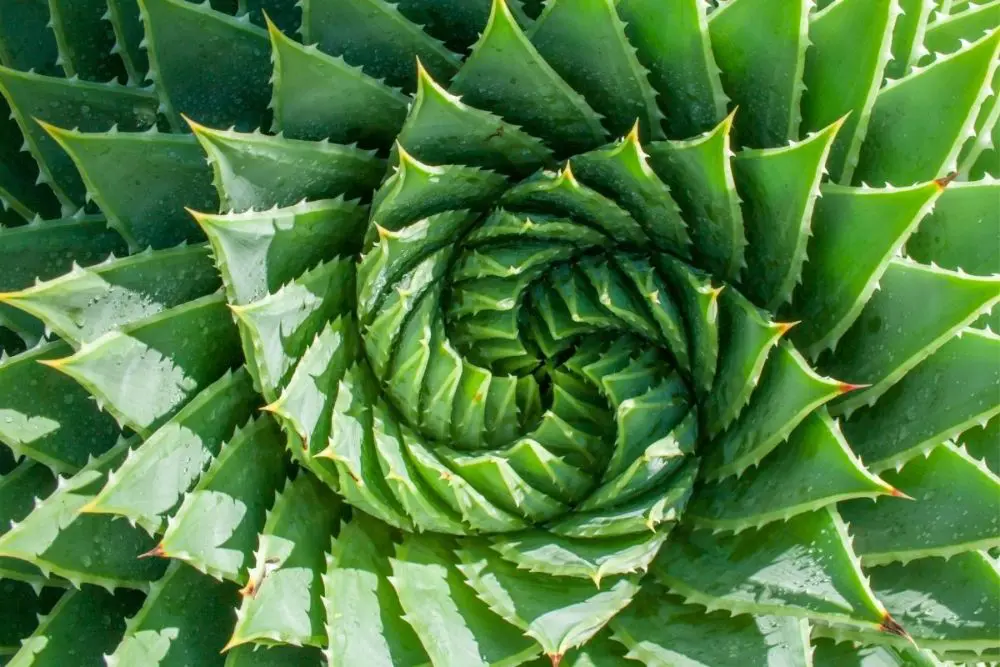
Native To: South Africa | Average Size: 12″ tall, 24″ wide | Flowers: Rarely. Salmon-colored, tubular flowers | Ease of Care: Easy | Uses: (Highly) decorative
This aloe plant is another beauty. Its thick, grayish-green leaves wind around in a gorgeous fractal pattern, almost like a giant spiky flower bloom. The more mature the plant is, the more pronounced the spiral becomes.
Aloe Polyphylla is a mountain aloe, so it prefers full sun but is tolerant of cooler temperatures and thrives in cooler summers.
Wondering if a spiral aloe unfurls in a clockwise or counterclockwise pattern? It depends — you’ll have to grow one at home to see which way it goes!
7
Fan Aloe (Aloe Plicatilis)
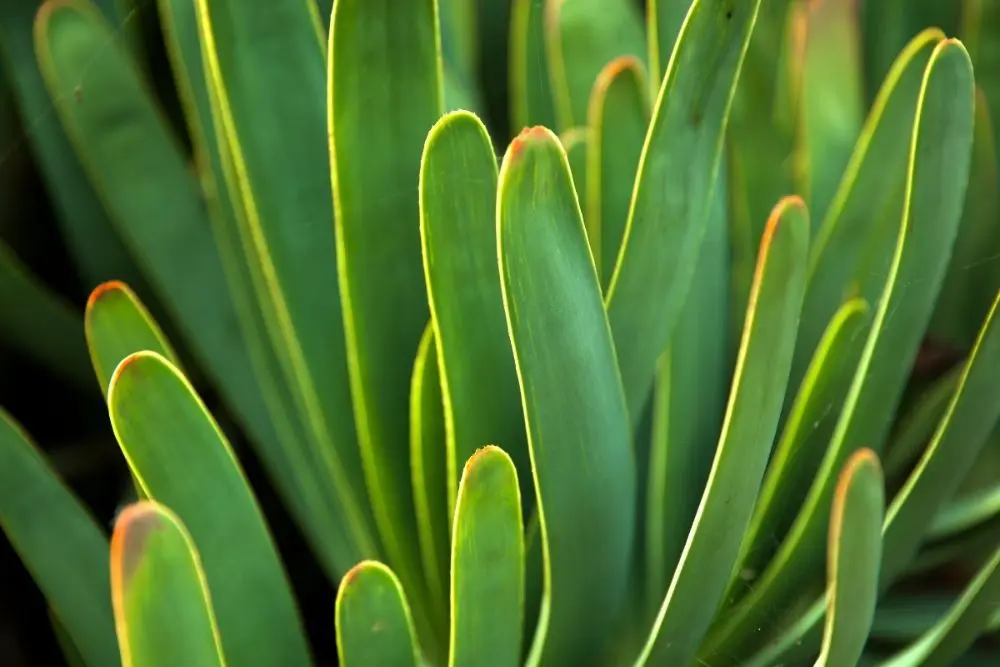
Native To: South Africa | Average Size: 4′-8′ tall, 4′-6′ wide | Flowers: Bright red-pink flowers in the Spring | Ease of Care: Moderate | Uses: Decorative. Attracts birds and bees.
If you want an aloe plant that doubles as a structural work of art, look no further than aloe plicatilis. This aloe is more like a tree or an elegant shrub than a typical succulent. Fan aloe grows slowly and gradually changes over time. As leaves on the bottom fall off, more of the aloe’s trunk is exposed, making it look more and more like a tree as it ages.
Note that fan aloe is the one variety on our list that is better-suited for outdoor growing, as it can get quite large. However, it also does well in containers, as long as it’s in well-drained, sandy soil, gets plenty of sun, and isn’t exposed to cold temperatures.
We could keep going — we haven’t even talked about tiger aloe, soap aloe, golden-toothed aloe, or hundreds of more possibilities!. Spiky, cute, huge, bumpy, smooth, tall, short, striped, and shaggy: there’s an aloe for every room, garden, or mood!
Taking Care of Your Aloe: The Basics
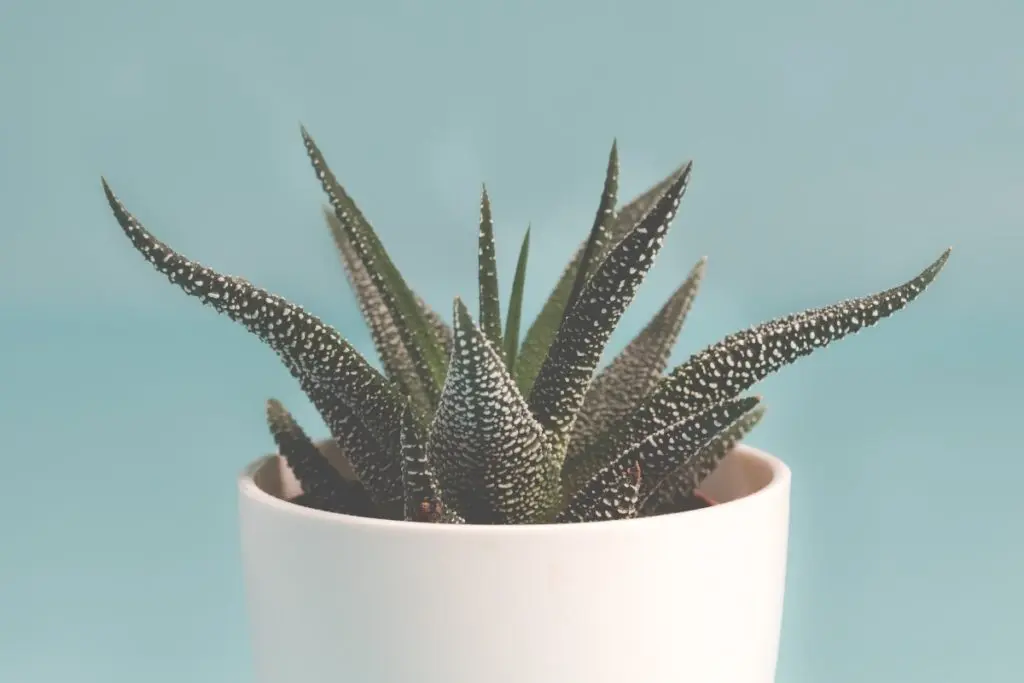
Aloes are flowering semi-tropical succulents. Most aren’t very cold-hardy, so make sure to do your homework if you’re planning to keep yours outside year-round. In general, aloe plants are easy-to-grow, disease-resistant little troopers.
Nonetheless, all plants need care and attention. Here are the four keys to making your aloes happy.
- It’s all about the light. Or sometimes not — the beauty of aloe is that it’s pretty forgiving! Since aloe is a succulent, it loves sunlight and warmth and will grow faster and more evenly given a sunny spot. However, if you don’t mind more modest growth, it should also do just fine in a place with more indirect light. Either way, it needs about six to eight hours of sun every day.
- Use well-drained soil. Even better, use soil for succulents. We recommend using a container with plenty of holes in the bottom, with a saucer or plate beneath your plant to promote good drainage.
- Water consistently, but sparingly. A good rule of thumb is watering about once a week, but it’s better to let your aloe dry out a little bit rather than over-water. Do you see brown ends on the tips of the leaves? That’s usually a sign you’re watering too much.
- Move if necessary. If you keep your aloe indoors, consider popping it outside for periodic sunshine sessions when it’s warm out. Your aloe will be happy to soak up light and warmth for the winter ahead.
Further Reading
